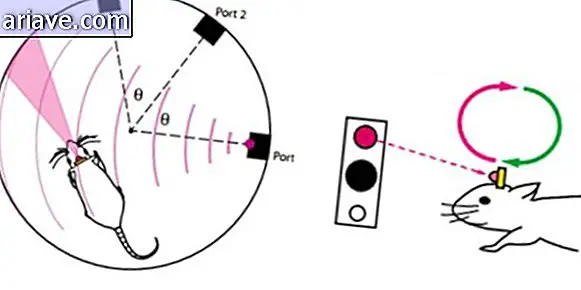5 times when humanity almost faced a nuclear apocalypse
In the last months of 2015, the whole world saw moments of tension between some countries, which led to speculation about a possible conflict on a global scale - in other words, we came close to witnessing the beginning of a Third World War.
The big problem with something like this happening today is that some nations have a considerable nuclear arsenal that could be deployed at any time. Massive use of such bombs could have catastrophic results, and the post-apocalyptic scenarios we see in movies and games could come true.
The risk that the whole thing will blow up, however, is not all that current: tempers were already high in the cold war period, when the world came closer to a great conflict. That is why we have prepared a list of five situations in which humanity has almost witnessed a nuclear apocalypse. Check out:
5 - A dangerous technical problem (1961)

The 1960s were delicate when it came to politics: the world was polarized between the United States and the Soviet Union, and the two nations were not particularly friendly to each other. In 1961, as the population followed the news of the birth of John Kennedy Jr., the US Army was preparing to bomb Russia.
The reason was the fall in communication between all units of NORAD, the US aerospace defense agency. The military's immediate conclusion was that the Soviet Union was attacking, either through sabotage of the US's main defense system against possible nuclear missile launches.
As the United States prepared to retaliate with its bombers loaded with nuclear warheads, someone discovered that a station in Colorado that had had technical problems - and all communication between units went through that point. In the end, there was no attack and a single overheated reactor could have decreed a third war.
4 - The Cuban Missile Crisis (1962)

One of the best-known stories of Cold War tension, the Cuban missile crisis came in 1962, just a year after the NORAD incident. This goes to show that the nerves really were on the skin at that time.
The whole situation was the discovery by the Americans that the Soviet Union was setting up nuclear missile launch pads in Cuba, less than 200 kilometers off the east coast of the United States. John Kennedy, the US president, ordered a maritime blockade to prevent more material from landing on Cuban land.
It was five days of tense negotiation between the US government and the USSR. In one letter, Kennedy even said that neither country wanted to sink the world into a war no one could win that would result in catastrophic consequences for all mankind. An agreement was reached for the Soviets to remove their missiles from the island in exchange for the withdrawal of US missiles from Turkey.
3 - The incident in Palomares (1966)
No one wanted to fight, but some situations sound like an unnecessary risk, such as the Spanish coast incident in 1966. An American B-52 bomber was flying over the edge of Soviet airspace when it began a process of refueling through another aircraft.
Something went wrong, the plane that was supplying fuel in midair hit the bomber and immediately the two began to crash. There was only one detail: the B-52 carried four hydrogen bombs. Three of them landed in a village in the Andalusia region, with two causing small explosions - no nuclear reaction, luckily, but scattering radioactive plutonium there.

The third bomb fell into a river without detonating, while the fourth device was only found two months later in the Mediterranean. The cleanup of nuclear radioactive material still happens even 50 years after the incident.
2 - Nuclear projections that went wrong
During the 1970s and 1980s, the US worked hard on what they called "War Games": software that created scenario projections that could result in direct conflict between Americans and Soviets. The problem is that this program showed some glitches in its operation, and was not just an occasion.
In 1979 the software sent fake radar data to four US nuclear commandos, showing a full-scale attack by the Soviet Union. Luckily, other radars had no problem and managed to stop all the movement that had been started to retaliate for the alleged attack.
A year later, in 1980, the program again presented information on the launch of 2, 000 Soviet missiles against the US. The number came after a dial, which usually read "0000", turned to "0200" and then "2000". The bombers were already prepared when the false alarm was quickly identified and, once again, a US attack motivated by a failure was prevented.
1 - Post Cold War Hangover
With the apparent end of the tension between Russia and the United States as early as the 1990s, nothing seemed to disturb the world's quiet about the risks of nuclear war. In 1995, however, a group of Norwegian researchers launched a rocket to study northern lights.

The problem is that Russian stations mistook the device for a US missile - not far from reality, as the Norwegians were actually using a US rocket for the test, but they warned governments in several countries, including the US. Russia, than planned.
Still, in a lapse, it was a matter of time before Boris Yeltsin contacted one of his generals to activate his country's defense system against nuclear attacks. Luckily, they decided to wait and see the rocket's trajectory and realized it was not an offensive. This shows that after decades of tension, the Cold War hangover was still present.











